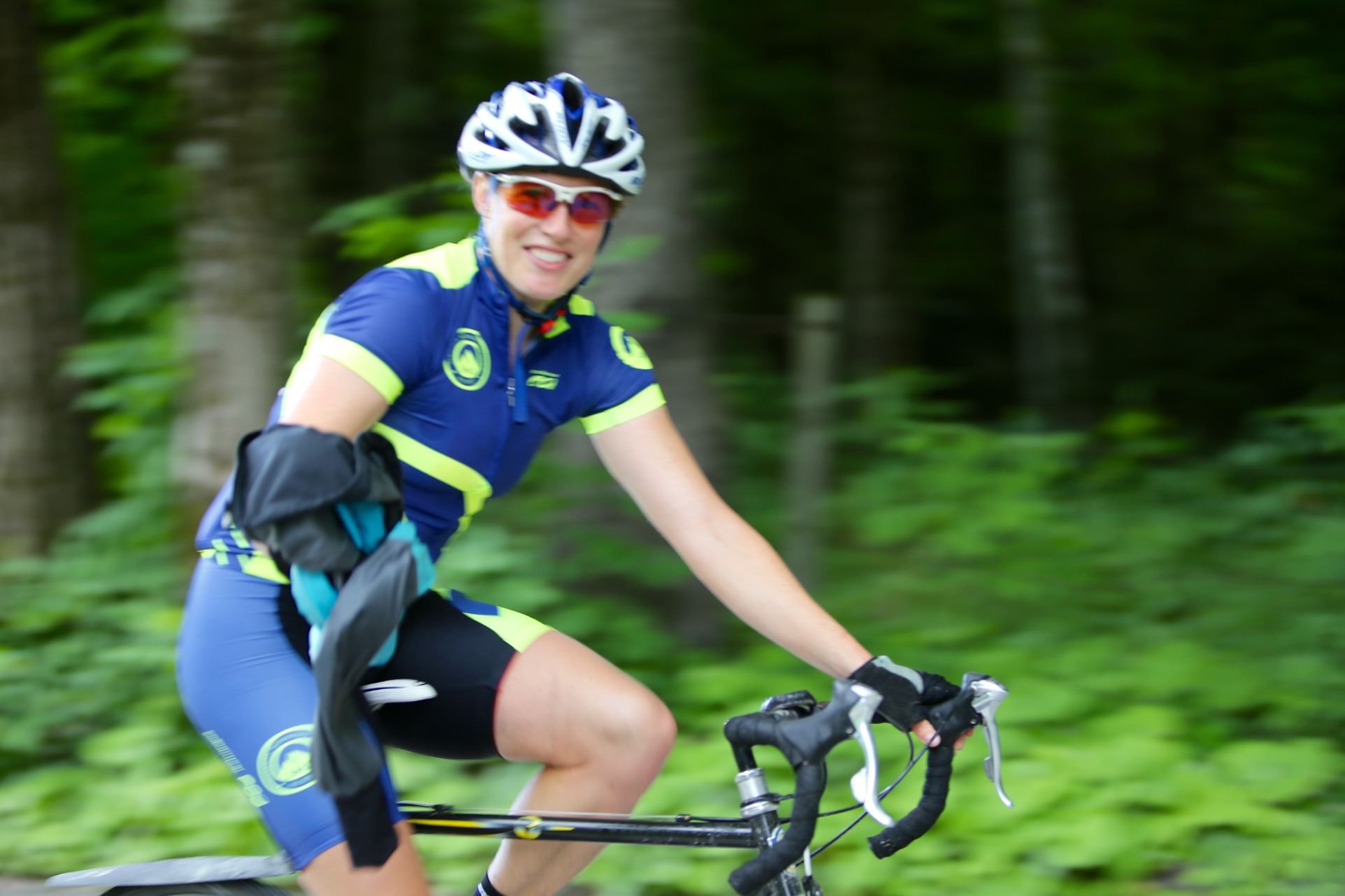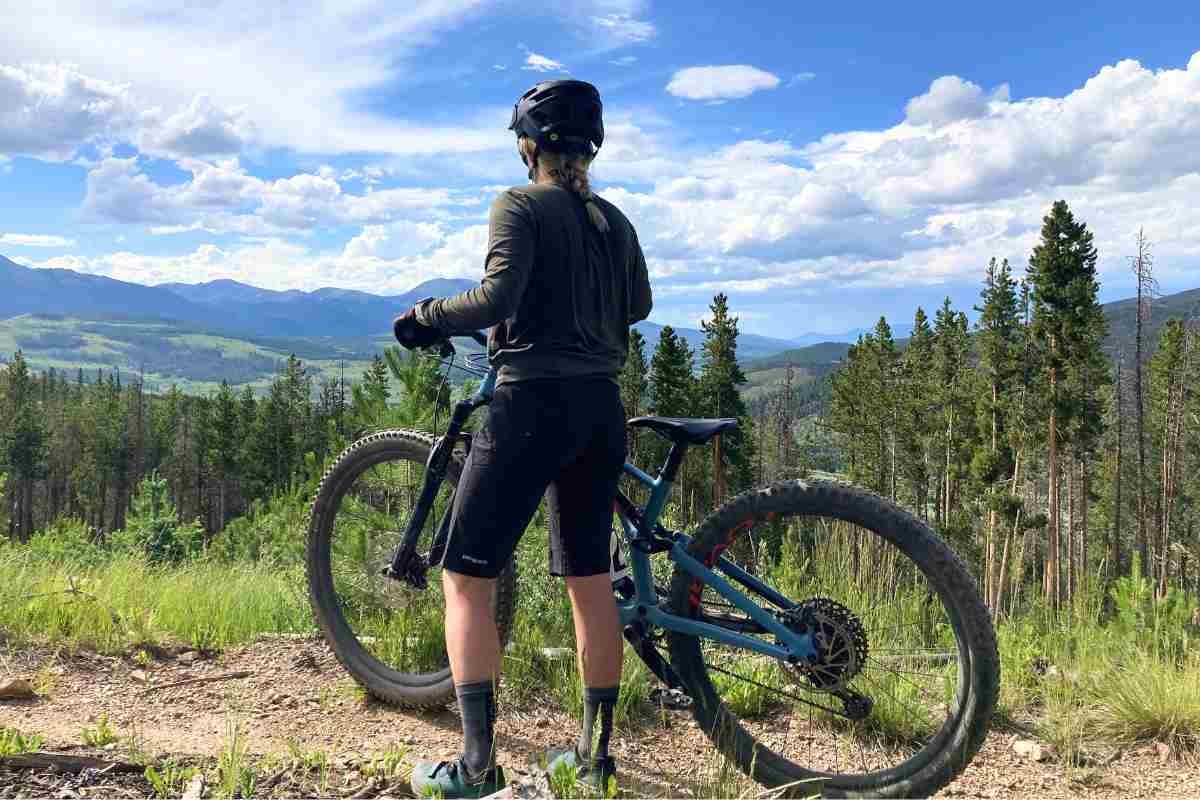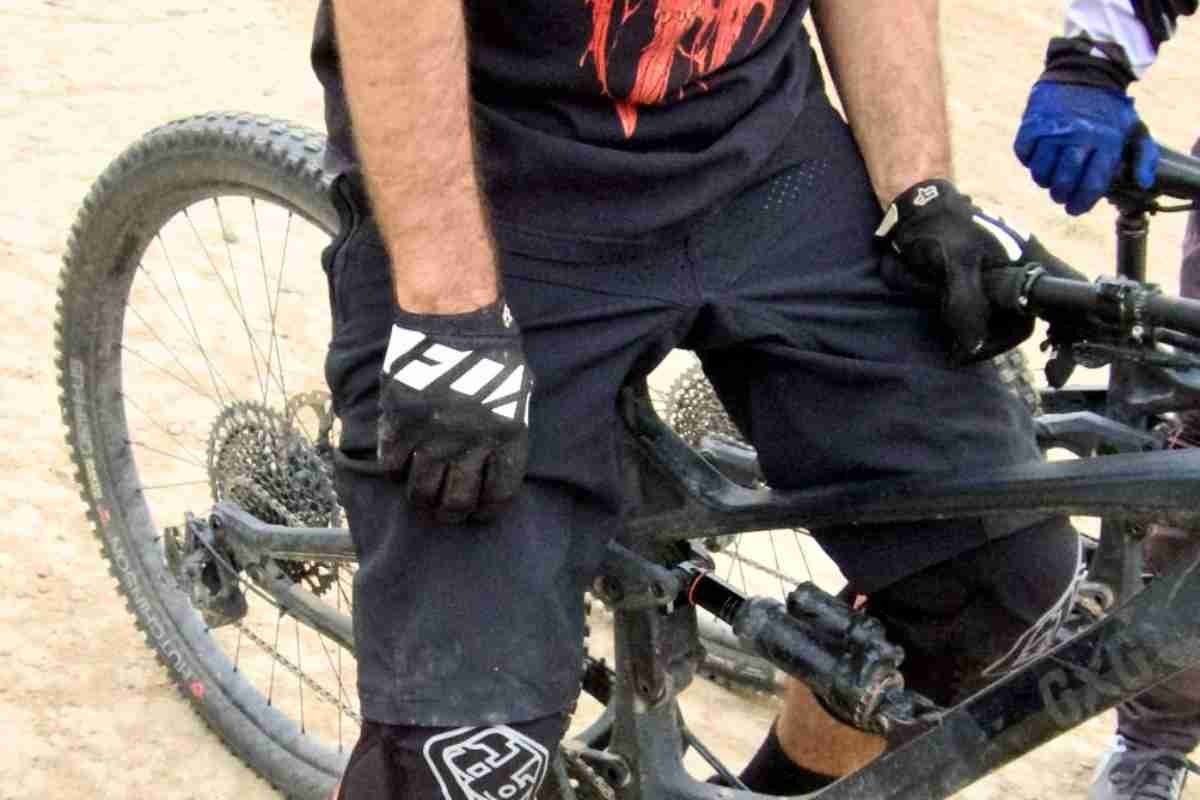How to Fit a Women's Bike Saddle
how to find a comfortable pain-free bicycle seat for women
We create reader-supported, objective, independently-selected gear reviews. This story may contain affiliate links, which help fund our website. When you click on the links to purchase gear, we may get a commission, without costing you an extra cent. Thank you for supporting our work and mission of outdoor coverage for every body! Learn more.
If you find yourself shifting your weight on your bicycle to decrease pressure or friction on your soft tissue and sit bones, know that solutions exist and are worth pursuing.
Having a better-fitting bike saddle will help you ride longer, farther, faster while new innovations have made saddle fitting—the art of finding a saddle based on riders’ unique anatomy—better for cyclists.
No matter what your current fitness goals are, optimizing your bike setup will pay off. Riding your bike should be fun, not painful!
Note: While we refer to “women’s bike saddles” in the title, this story is for everyone who has a vulva and wants to feel more comfortable riding a bike.
The author, Catherine Harnden, is a internationally competitive road cyclist and cross country mountain biker.
Why you should trust us
Hi! My name is Cat (Catherine) Harnden, and I'm the Head Mountain Bike Coach and Assistant Alpine Coach at Stratton Mountain School, a winter sports academy established in 1972 that has graduated 118 National Team athletes, 46 Olympians, who've gone on to win 6 Olympic medals.
When I'm not coaching, I compete in the elite (pro) women's cross country mountain biking category. In the past, I've competed at the world cup level in downhill mountain biking.
Before focusing on mountain biking, I also competed in and podiumed at the national level in road cycling and track cycling. I wrote Treeline Review’s guide, How to Train for a Century Ride.
Your bicycle saddle should not feel so uncomfortable that you shift your position or weight to avoid sensations.
How to know when to make a change
Do you feel pressure or friction on your soft tissue, pubic bone, or sit bones as you ride? Do you shift your position or weight to avoid feeling those sensations? Not all causes of poor saddle fit come from having the wrong saddle. But if you feel uncomfortable in these areas, some changes in and around your saddle may help.
First, while we won’t go into details in this story, padded cycling shorts-often called chamois shorts-are the first line of defense and the least expensive way to address the issue.
Assuming that you already have a favorite pair of padded cycling shorts to ride in, the next adjustment you could make to relieve saddle pain is a bike fit.
Related: Best Women’s Mountain Bike Shorts
Working with professionals can help you get a more comfortable fit.
Step 1: Get a Professional Bike Fit
If you are able to visit a shop with fit capabilities, it can make a substantial difference in feeling good on your bike.
Difference between a basic bike fit and a professional full bike fit
A basic bike fit — often done by riding on a special indoor bike where a fitter watches your form — typically only provides your reach and standover height.
Reach refers to “the horizontal distance measured from a vertical line up through the centre of the bottom bracket to a vertical line through the centre of the headtube, and translates to the position of your hands on the handlebar and how 'stretched' you are on the bike.”
Standover height is “The standover height of a bike is the distance between the ground and the top of the top tube.”
In contrast, a professional full bike fit is far more detailed and covers all aspects of bike positioning, from cleat alignment to saddle tilt. If you’re not sure what these are, ask your bike fitter! This more advanced fit is the kind that can both relieve and rule out saddle pain due to positioning (think leg length discrepancies and pelvic tilt), as well as additional performance benefits for efficiency.
A bicycle should be optimized to fit your body so that you can meet your riding goals—whether that is distance, time, or just plain fun.
What should I expect at a professional bike fitting?
Setting the bike up optimally for you is the goal of the fit. The better you can express what you prefer, the happier you will be with the result.
The average professional fitting takes about two hours in length and $200 in cost. However, the range is pretty wide depending on the style of fit, location, and fitter’s experience level. To make the most of this investment, bring your favourite riding clothing to wear while being fit; especially make sure to bring the bike shorts you log the most mileage in. Your fitter can also help you in the saddle selection process and point you in the right direction.
Going for a bike fitting can be compared to going to the dentist. While it is likely not a preferred pastime, it is ultimately great for your health. You should book in advance, and it’ll likely be the kind of appointment where it is obvious to your provider if you are being truthful or not! (Note: Most people won’t need to go to the bike fitter for routine maintenance like it’s advised for dentist visits!)
At the end of the day, honesty with your provider about how you ride will help them help you the best they can. At the dentist, it can be tempting to pretend you're an avid flosser, but the lie doesn’t actually help anyone and is better off avoided. Similarly, when you go to the bike fitter, be honest with yourself and your bike professional. If you tend to ride in a more relaxed position, say, on your hoods (the top, less aggressive part of your handlebars), communicate this to them.
Riding position is essential because getting fitted for the most aerodynamic positioning isn’t helping you if you prefer a more relaxed position. If you don’t intend to race, you can ask to be fitted for more saddle comfort instead of optimizing for speed.
If a riding position adjustment results in a new sensation you’re unsure of, don’t be afraid to ask questions and talk through it with your bike fitter.
Parts of a bicycle that you may want to measure when making adjustments to your current saddle.
Step 2: Adjustments you can make to your current saddle
If the fitter decides your saddle or saddle position might be the issue creating trouble during your rides, there are three possible adjustments you can make to your saddle position: Seat height, fore-aft positioning, and tilt. Typically, these measurements are adjusted in this order as well.
Seat Height
First, your fitter will help establish the ideal seat height for your body geometry. This is the distance from the top of your saddle to the center of your pedal when the crank arm is pointed down in line with the seat tube.
Before you or a bike fitter begin making any adjustments, write down this measurement so that you have it as a baseline to return to and work from.
See the diagram above for the position of parts you may be measuring.
Fore-aft positioning
Fore-aft positioning refers to how far forward or back your saddle sits on the seat post relative to your handlebars. Most saddles have guideline measurements on their rails with maximum limits set and easy to center measurement markers reminiscent of a ruler. Write down, or take a side profile photo of, your saddle to note your starting position here as well.
Saddle Tilt
Saddle Tilt is the degree angle of the nose of the saddle. Start with a neutral angle, meaning that the saddle is flat when measured against a level. From neutral, you can then adjust your saddle tilt one degree backward (the nose of the saddle is slightly upwards/saddle is slightly sloped upwards), and then try adjusting your saddle tilt two degrees backward.
If this didn’t relieve any discomfort, return to neutral and try adjusting one degree forwards (the nose is slightly downwards/saddle is slightly sloped downwards), and then two degrees forwards.
If these adjustments have not helped alleviate discomfort, it might be time to try a different saddle. Check with your fitter to ensure other aspects of bike fit aren’t the issue first.
A third-party bicycle saddle isn’t just for the professionals. It can help any cyclist have a more comfortable, enjoyable, or competitive ride—depending on your goals.
Step 3: Consider a new bike saddle
If you still have to compromise your position on the bike to be comfortable, then it’s likely time to purchase the right bicycle saddle (sometimes called a bicycle seat).
Outside of a professional bike fit, purchase your own saddle to better match your unique anatomy.
Some bike riders might benefit from purchasing a saddle that works with their unique anatomy and body geometry better than the saddle that comes with the bike when they buy it.
Personalizing saddles is not just for the “pros.” Finding a saddle for your body — whether that is wider hips, wider sit bones, or something else — can make the cycling experience more enjoyable.
How to choose a bike saddle
On "Comfort": Will a Cushioned Saddle Be More Comfortable?
For many cyclists, purchasing a highly cushioned saddle to solve the comfort factor on a road bike is ill-advised.
The reason why a cushioned saddle like you might see on an indoor bike will not feel comfortable on an outdoor road bike, is time spent in the saddle. Indoor bike workouts are typically much, much shorter than outdoor bike workouts. Indoor bike rides also tend to be varied enough in intensity to require both seated and standing pedaling.
For example, the maximum length of an indoor ride offered by the Peloton app is 90 minutes, and the average length is 30 to 45 minutes. There is no maximum length of an outdoor ride, but the average is two to three hours, based on my experience and training cycling athletes.
A post on the website for Selle Italia, an Italian racing saddle company, described this comfort paradox best.
Ultimately, Selle Italia recommends that you think about the best saddle for you based on the time you spend riding. The more time you spend in the saddle, the more likely different sensations will make themselves known. Ultimately, a comfortable ride is compounded by main factors, including how the saddle works with your body geometry, your position and riding style, and the time you spend in the saddle.
Selle says:
"A simple yet effective example to help you understand how important this information is is to think in terms of a soft couch. It’s great for lying down to watch a film for two or three hours, but for a long sleep, you need an “ergonomic” mattress with a firmness adapted to support the body throughout the night.
"In the long run, excessive softness and padding would not be good for the spine, and you would wake with widespread back pain. The same applies to saddles."
Their rule of thumb is for short rides of up to two hours, padding can give a "sense of comfort." But the more time in the saddle, the better served you will be by a firmer option: "the thickness of the support should be reduced to ensure maximum efficiency and comfort."
The time necessary to decide whether or not a saddle works for you is typically over a week. If you experience any immediate feedback of discomfort or pain, do listen to your body. Add that saddle to the pile of rejects. If you find one that appears to be comfortable, ride it for a week to make sure. While you may feel great on the first long ride out, how you feel afterward and on consecutive rides will be very telling. And if you’re riding for much longer than usual, you may feel soreness afterward regardless of which saddle you use.
To Cut Out or Not To Cut Out? What Kind of Bike Saddle Should Women Get?
The best way to find your optimal saddle shape and fit is to try a bunch of different saddles. Should you find the perfect saddle for you, use it! Don’t be afraid to use the one that works best for you, even if it doesn’t seem “pro” or cool.
However, cut-out saddles are one of the most popular types for people with vulvas and are often marketed as "women's saddles" or "female saddles."
Cut-out saddles have a hole located near the center of the bike seat. The goal of a cutout is to prevent numbness by promoting weight distribution through your sit bones rather than soft tissue. In fact, all saddles have the same goal (except perhaps the stock options that come with a new bike). Cut-out saddles also maximize airflow and, depending on how you sit, can minimize chafing.
A “channel” is the central lower profile section of a saddle where the material has been removed so as to not be a touchpoint. When a channel is a fully removed section, meaning you can see through the center, it is called a cut-out.
While cut-out saddles remain the most popular option, like snowflakes, no two people's anatomy is exactly alike. Sometimes, cutouts aren’t for everyone.
Group rides and cycling events can be an opportunity to see different saddles firsthand and to test out saddles to see how they work with your body. Some online services also make it easy to rent saddles and test them before purchase. In either case, we recommend trying before you buy.
Step 4: Can I rent a saddle to test it before purchase?
Many brands support test ride programs in which, for a small fee, you can demo a saddle for a set amount of time. These can be found through bike shop retailers and also online.
Sportfit Lab is the most popular of the online rental stores. You may rent one, two, or three saddles at a time to test ride, and then use that rental fee as a credit towards a saddle purchase. In their words, “We pay shipping both ways. Then you receive a $20 - $50 credit toward your saddle purchase.”
Rent one saddle for two weeks: $35
Rent two saddles for two weeks: $55
Rent three saddles for two weeks: $75
You can make adjustments to your bicycle saddle yourself or with the help of a professional to improve your riding experience.
What to look for in a bike saddle
To get a sense of where to start your search for the right saddle for your body, consider visiting Selle Italia’s ID Match Experience. This user-friendly survey walks you through each of the key considerations when deciding which saddle best matches your intent. It takes approximately 5 minutes to complete. If you’re unsure about any metric such as your pelvic tilt, it provides guidance on how to check it at home.
Anatomy
The pressure and point of contact points on a saddle are designed to match your anatomy.
Height
Also called "Seat height" or "saddle height", height is a commonly known metric to help narrow down your specific body structure.
Body Size and Bone Structure
Measuring your body size and bone structure will help determine your sit bone width, which then informs saddle width. This can be especially useful for cyclists looking for a wider saddle.
Flexibility
Flexibility also contributes to the shaping. Less flexible = more shaping (Wave saddle), more flexible = less shaping (Flat saddle).
Posterior or Anterior Pelvic Tilt
If you look at the side profile of a saddle, your pelvic tilt determines optimal shaping. Posterior typically prefers a “wave” saddle — one that has a downward curve at the nose and an upward curve at the tail. Anterior typically prefers a “flat” saddle — no curve from nose to tail. In the middle of the two designs is a “neutral” saddle which has a slight curve, but far less pronounced.
Type of Riding (Road, MTB, Triathlon, Gravel, Touring, Commuting, BMX)
The type of riding you do can inform the shaping. If you’re a rider doing a lot of movement on your saddle and shifting your weight (you prefer to change riding position frequently between handlebar hoods and drops), you may prefer a flat or neutral saddle. A wave saddle is typically a more comfortable bike seat for a rider that stays solidly in one position.
How ‘aero’ do you want to be
The angle at which you ride and sit on the bike is another indicator of how aggressive your positioning will be; it determines what part of your sit bones your weight and the saddle pressure are distributed through. For example, touring rides are done in a much more upright position than a racing position because it’s a more comfortable but less aerodynamic position.
Regardless of your riding style and your goals when you ride, you deserve not to feel pressure or friction on your soft tissue or sit bones. There are solutions to make it easier for you to ride. Being more comfortable will help you ride longer, farther, and faster.












